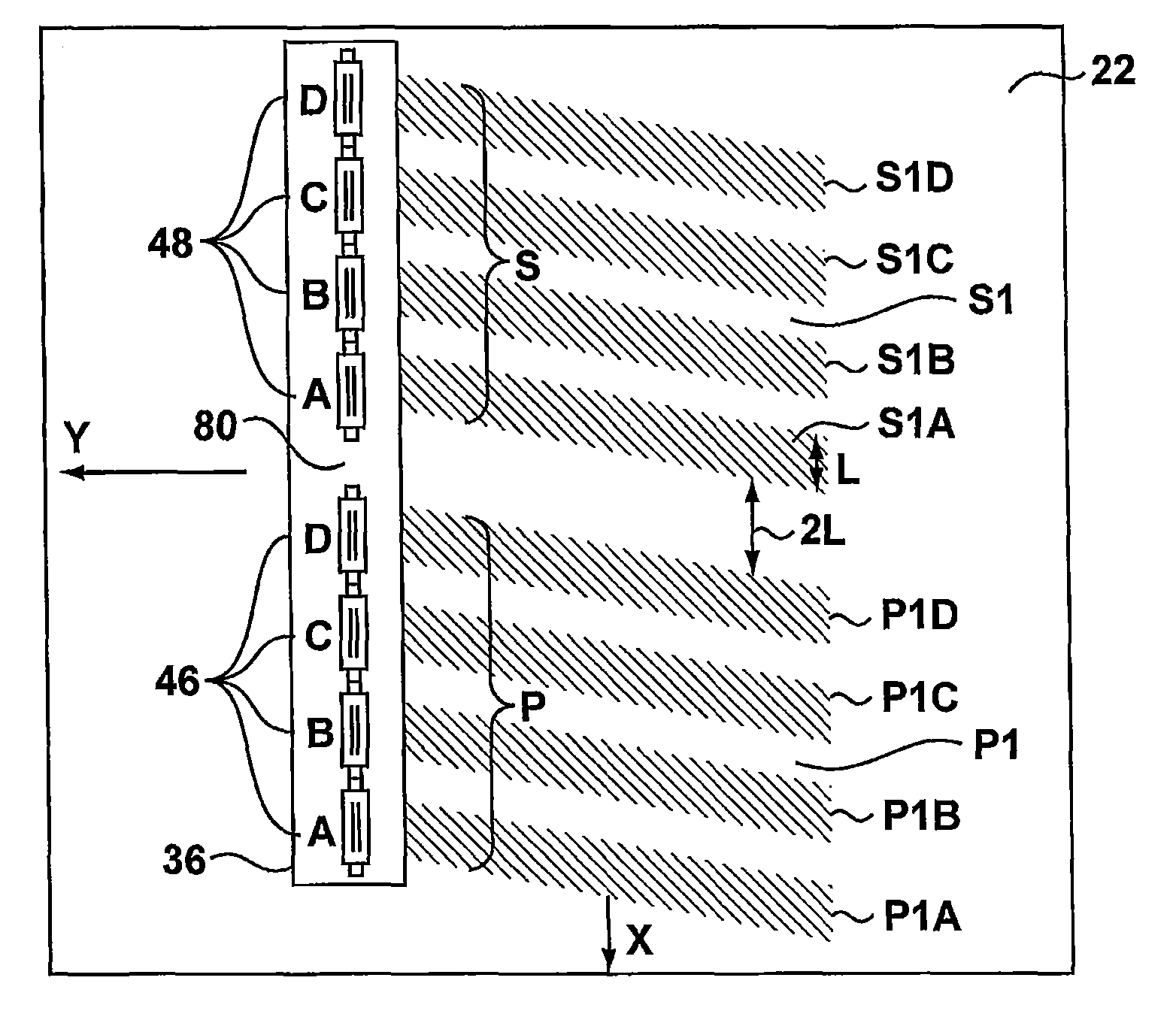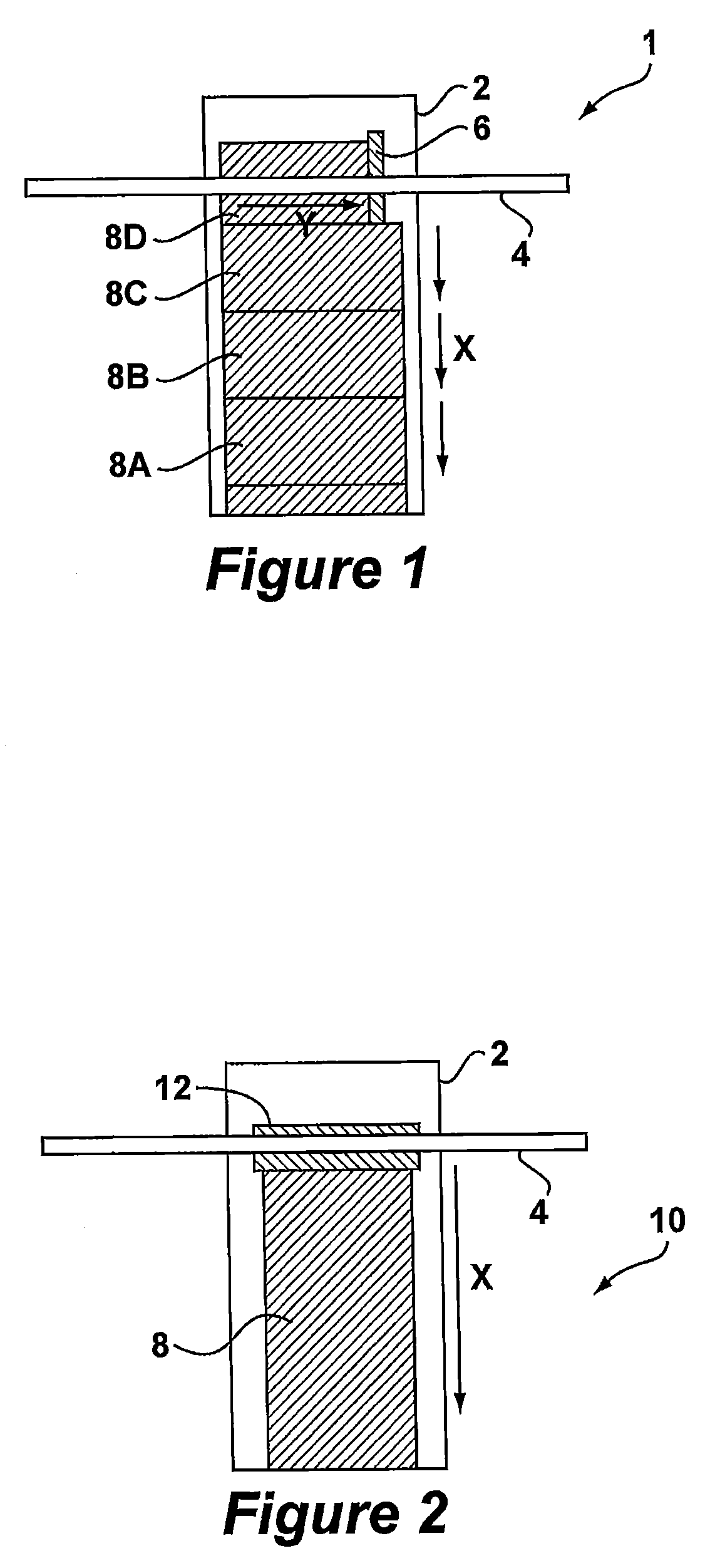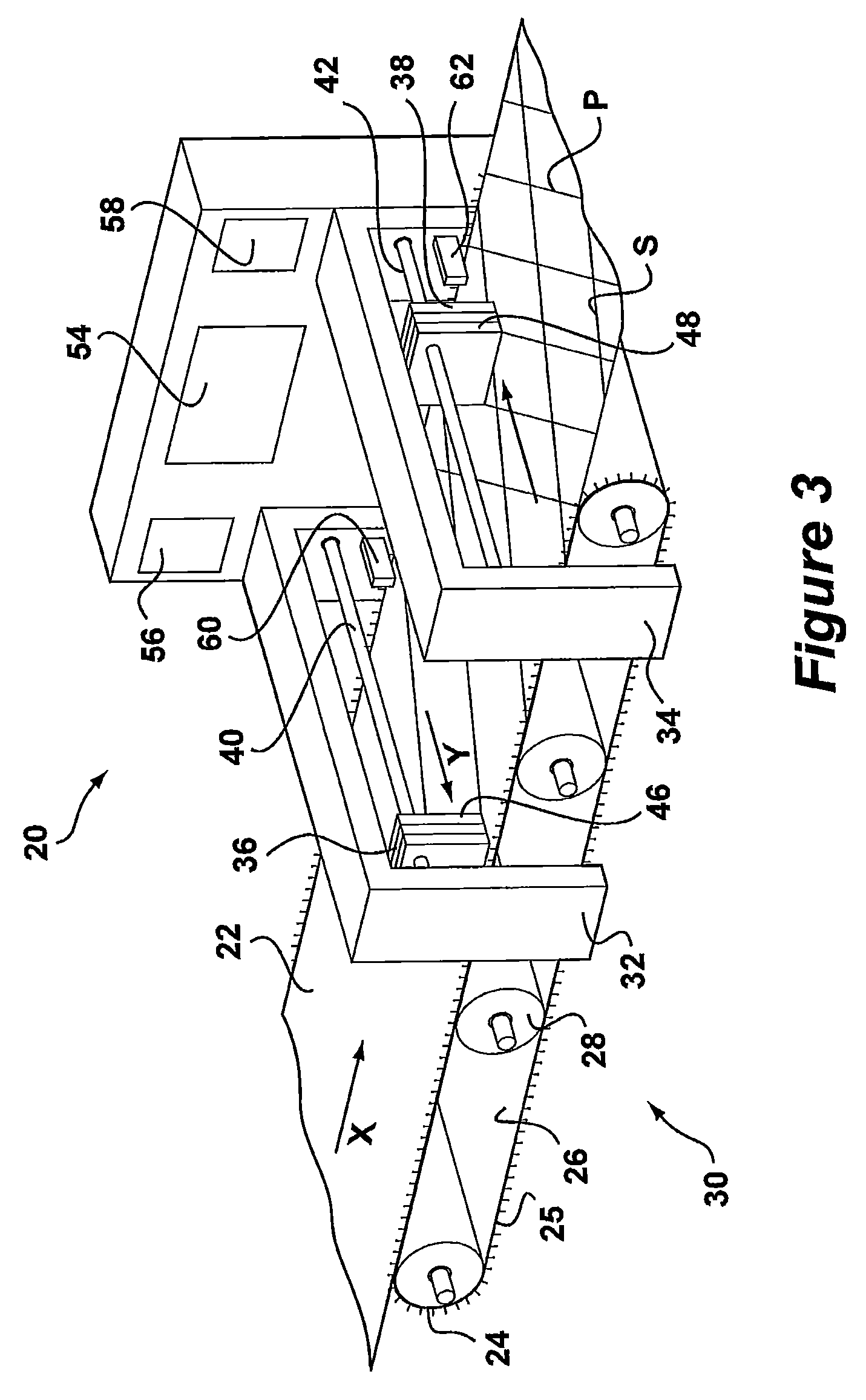Print carriage
a carriage and printing technology, applied in the field of printing carriages, can solve the problems of not being able to locate two heads next to each other without leaving, and the arrangement is not directly suitable for diagonal operation, so as to reduce the calibration required
- Summary
- Abstract
- Description
- Claims
- Application Information
AI Technical Summary
Benefits of technology
Problems solved by technology
Method used
Image
Examples
first embodiment
[0072]According to FIG. 6, a single carriage print arrangement according to the invention is depicted in which, for the sake of clarity, only the positions of the heads and nozzles are shown. Like reference numerals denote corresponding elements to those of FIGS. 1 to 5.
[0073]The print carriage 36 comprises a first set 46 of print heads 46 A-D and a second set 48 of print heads 48 A-D. The print heads in each set 46, 48 are Xaar Omnidot™ 760 as those of FIGS. 1 to 5 and each has a head length l. This length l is the effective width over which the head can deposit the substance to be printed and need not correspond to the physical length of the head itself. The print heads are also mutually spaced from adjacent heads within the set by the same distance l. Such a distribution of print heads is hereafter referred to as a comb formation, since operation of the carriage may deposit a substance onto the surface of substrate 22 in swathes P, S as if a comb had been drawn over the surface. ...
second embodiment
[0077]carriage 36 is shown in FIG. 7 in which heads 46 A-D are stacked in two rows, offset from one another in the traverse direction. The heads 48 A-D of the second set 48 are also stacked in a similar manner. As was the case in the embodiment of FIG. 6, the heads 46 A, B are spaced by a distance l, as are the heads 48 A, B, 46 C, D and 48 C, D. Furthermore, according to the invention an alignment means 80 in the form of a double spacing 21 is provided between the first set 46 and the second set 48.
[0078]In use all of the heads of the carriage 36 are used to deposit the same substance onto the substrate 22 in primary and secondary swathes P, S. In this case, the heads are driven to deposit at a resolution of 90 dpi in the traverse direction. Stacking of the heads causes areas of the first pass P1 to be printed twice by both heads 46A and 46C, achieving a resultant definition for the first pass P1 of 180 dpi. Other areas are twice printed by heads 46B and 46 D. Since the carriage 36...
third embodiment
[0082]FIG. 8 shows part of a carriage 36 according to the invention having an alternative arrangement of heads in two sets 46, 48. The heads 46A, B . . . in the first set (only the first two heads are shown) are arranged in comb formation with a head spacing 1. The heads 48 A, B, . . . are also arranged in a similar formation and are offset laterally from the first set 46 by a distance m which serves as an alignment arrangement 80. As can be seen from FIG. 8, at an angle β, the swathe P1B deposited by head 46B passes perfectly between the heads 48 A, B and can complement the swathes S1A, S1B deposited by these heads. For this to occur, the swathe angle α must be set equal to angle β=arctan l / m. The skilled person will understand that since the spacings are equal for each set 46, 48, the heads will also complement each other on the reverse pass when driven at the same angle. The embodiment is however limited to only this swathe angle.
PUM
 Login to View More
Login to View More Abstract
Description
Claims
Application Information
 Login to View More
Login to View More - R&D
- Intellectual Property
- Life Sciences
- Materials
- Tech Scout
- Unparalleled Data Quality
- Higher Quality Content
- 60% Fewer Hallucinations
Browse by: Latest US Patents, China's latest patents, Technical Efficacy Thesaurus, Application Domain, Technology Topic, Popular Technical Reports.
© 2025 PatSnap. All rights reserved.Legal|Privacy policy|Modern Slavery Act Transparency Statement|Sitemap|About US| Contact US: help@patsnap.com



